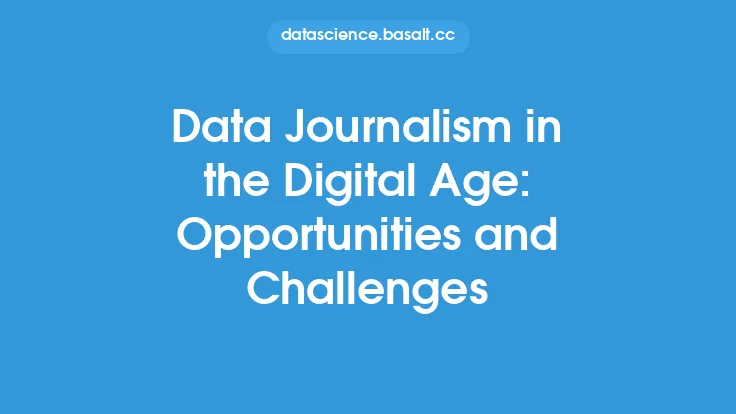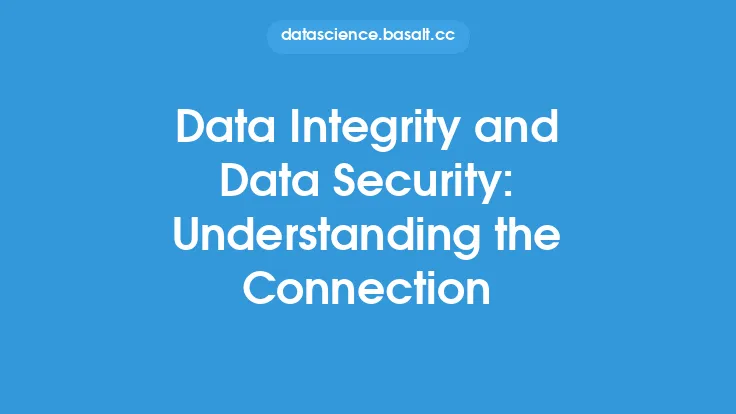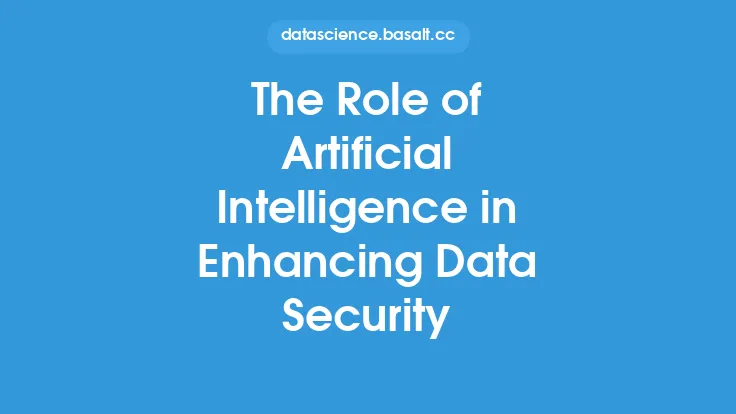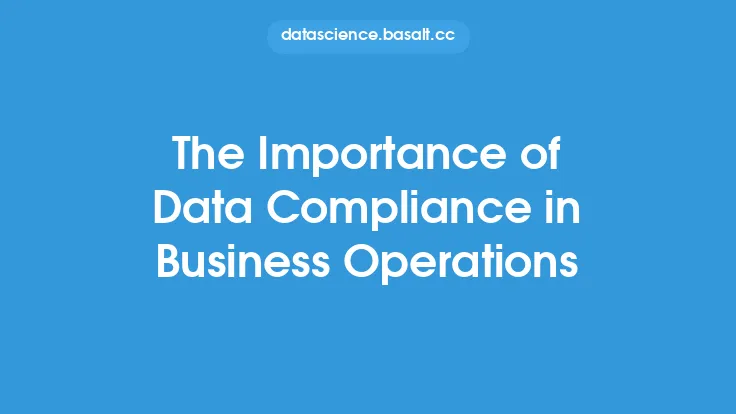In today's digital landscape, data security threats are a pervasive and persistent concern for individuals, organizations, and governments alike. The rapid evolution of technology has created new avenues for data collection, storage, and transmission, but it has also introduced a myriad of risks and vulnerabilities that can compromise the confidentiality, integrity, and availability of sensitive information. As the volume and complexity of data security threats continue to escalate, it is essential to understand the nature of these threats, their potential impact, and the measures that can be taken to mitigate them.
Introduction to Data Security Threats
Data security threats can be broadly categorized into several types, including malware, phishing, denial-of-service (DoS) attacks, man-in-the-middle (MitM) attacks, and advanced persistent threats (APTs). Malware, such as viruses, worms, and trojans, can infect computer systems and steal or destroy sensitive data. Phishing attacks involve tricking individuals into divulging sensitive information, such as passwords or credit card numbers, through deceptive emails or websites. DoS attacks overwhelm computer systems with traffic, rendering them inaccessible, while MitM attacks intercept and alter communication between two parties. APTs, on the other hand, are sophisticated, targeted attacks that use multiple vectors to breach an organization's security defenses.
Types of Data Security Threats
There are several types of data security threats, each with its unique characteristics and potential impact. Insider threats, for instance, involve authorized personnel intentionally or unintentionally compromising data security. This can include employees stealing sensitive information, accidentally deleting critical data, or failing to follow security protocols. External threats, such as hacking and cyberattacks, involve unauthorized individuals or groups attempting to breach an organization's security defenses. Physical threats, such as natural disasters, fires, and equipment failure, can also compromise data security by damaging or destroying data storage devices. Additionally, there are logical threats, such as software bugs and design flaws, which can be exploited by attackers to gain unauthorized access to sensitive data.
Data Security Threat Vectors
Data security threats can originate from various vectors, including networks, endpoints, and applications. Network-based threats, such as packet sniffing and spoofing, involve intercepting or altering data in transit. Endpoint-based threats, such as malware and unauthorized access, involve compromising individual devices, such as laptops or smartphones. Application-based threats, such as SQL injection and cross-site scripting (XSS), involve exploiting vulnerabilities in software applications to gain unauthorized access to sensitive data. Furthermore, data security threats can also originate from social engineering tactics, such as pretexting, baiting, and quid pro quo, which involve tricking individuals into divulging sensitive information or performing certain actions.
Impact of Data Security Threats
The impact of data security threats can be severe and far-reaching, resulting in financial losses, reputational damage, and legal liabilities. According to a recent study, the average cost of a data breach is approximately $3.9 million, with the total cost of data breaches expected to reach $6 trillion by 2023. Data security breaches can also result in the loss of sensitive information, such as personal identifiable information (PII), financial data, and intellectual property. Moreover, data security threats can compromise the integrity of data, rendering it unreliable or unusable. In some cases, data security threats can even have physical consequences, such as disrupting critical infrastructure or compromising national security.
Data Security Threat Intelligence
To effectively mitigate data security threats, organizations must have access to timely and accurate threat intelligence. Threat intelligence involves collecting, analyzing, and disseminating information about potential or actual data security threats. This can include information about known vulnerabilities, attack vectors, and threat actors. Threat intelligence can be obtained from various sources, including open-source intelligence, commercial threat intelligence feeds, and government agencies. By leveraging threat intelligence, organizations can proactively identify and mitigate potential data security threats, reducing the risk of a breach and minimizing the impact of a successful attack.
Data Security Threat Mitigation
Mitigating data security threats requires a multi-faceted approach that involves people, processes, and technology. From a people perspective, organizations must ensure that employees are aware of data security threats and take steps to prevent them, such as using strong passwords, being cautious when clicking on links or opening attachments, and reporting suspicious activity. From a process perspective, organizations must have incident response plans in place, which outline the procedures for responding to a data security breach. From a technology perspective, organizations must implement various security controls, such as firewalls, intrusion detection systems, and encryption, to prevent or detect data security threats. Additionally, organizations must regularly update and patch software applications, operate systems, and conduct vulnerability assessments to identify and remediate potential weaknesses.
Conclusion
In conclusion, data security threats are a pervasive and persistent concern in today's digital landscape. Understanding the nature of these threats, their potential impact, and the measures that can be taken to mitigate them is essential for individuals, organizations, and governments alike. By leveraging threat intelligence, implementing effective security controls, and promoting a culture of data security awareness, organizations can reduce the risk of a data breach and minimize the impact of a successful attack. As the volume and complexity of data security threats continue to escalate, it is crucial to stay informed and adapt to the ever-evolving threat landscape, ensuring the confidentiality, integrity, and availability of sensitive information.





